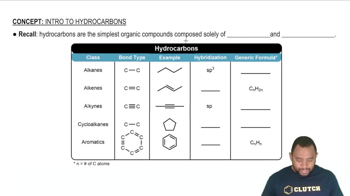Multiple Choice
Which of the following molecular formulas might indicate an alkene?
622
views
2
rank
 Verified step by step guidance
Verified step by step guidance Verified video answer for a similar problem:
Verified video answer for a similar problem:



 4:29m
4:29mMaster Intro to Hydrocarbons Concept 1 with a bite sized video explanation from Jules
Start learning